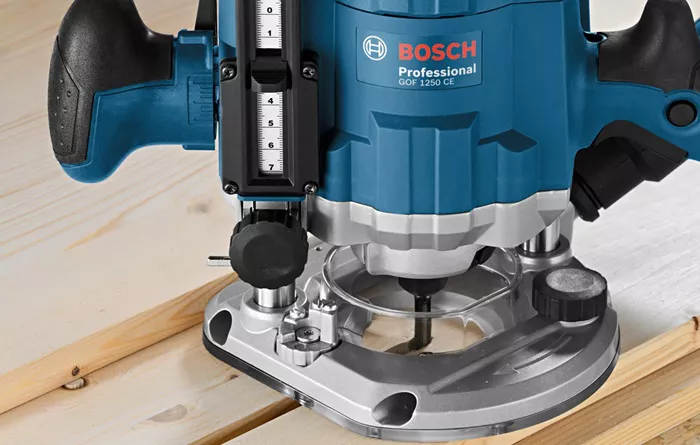Selecting the appropriate router tool is crucial for achieving precision and efficiency in woodworking and other projects. With numerous models on the market, each offering different features and capabilities, making an informed choice can significantly impact the quality of your work. This guide provides a detailed analysis of key performance factors and features to consider, helping you choose the router tool that best meets your needs.
1. Types of Router Tools
Fixed-Base Routers
Overview: Fixed-base routers are designed with a stable base that remains fixed at a specific height, providing accuracy for detailed work. They are ideal for tasks such as edge profiling and joinery.
Advantages: Offers greater stability and precision, making it suitable for detailed and intricate cuts.
Best For: Woodworking tasks that require consistent depth control and precision.
Plunge Routers
Overview: Plunge routers feature a base that allows the bit to be lowered into the material, making them versatile for a variety of tasks including creating grooves and dadoes.
Advantages: Provides flexibility in depth adjustments and is suitable for both surface and internal cuts.
Best For: Projects that require variable depth and complex cuts, such as hollowing out areas of wood.
Combination Routers
Overview: Combination routers offer the best of both fixed and plunge router features, with interchangeable bases that can be switched depending on the task.
Advantages: Combines the precision of a fixed-base router with the versatility of a plunge router, offering greater flexibility for various applications.
Best For: Users who need a versatile tool for different routing tasks.
See also: Top 10 GearWrench Tools Every Mechanic Should Have
2. Key Performance Factors
Power and Motor Capacity
Motor Power: The motor power, typically measured in watts or horsepower (HP), determines the router’s cutting ability. Higher motor power allows for faster and more efficient cutting through dense materials.
Variable Speed Control: Many routers feature variable speed settings, enabling users to adjust the speed according to the task and material type. This is essential for achieving clean cuts and preventing overheating.
Depth Adjustment Mechanism
Precision Depth Control: Accurate depth adjustment is critical for achieving precise cuts and finishes. Look for routers with fine depth adjustment mechanisms that allow for incremental changes.
Depth Stops: Depth stops help in setting consistent cut depths, which is particularly useful for repetitive tasks.
Ergonomics and Handling
Weight and Balance: A router tool’s weight and balance affect its ease of use and control. Heavier models may offer more stability, while lighter models are easier to maneuver.
Grip and Comfort: Ergonomic handles and grip designs contribute to user comfort and reduce fatigue during extended use. Look for routers with soft grips and well-placed controls.
3. Features to Consider
Base Design
Base Plate Material: The base plate material can impact the router’s stability and smoothness of operation. Common materials include aluminum and plastic, each with its benefits.
Base Size and Shape: Larger bases provide greater stability, while smaller bases offer more maneuverability. Choose a base size that suits the type of work you will be doing.
Dust Collection System
Dust Collection Attachment: A built-in dust collection system helps keep your work area clean and improves visibility. Look for routers with dust collection ports or attachments.
Efficiency: Evaluate the effectiveness of the dust collection system in capturing debris and reducing mess.
Safety Features
Safety Lock: A safety lock or switch prevents accidental starts, adding an extra layer of protection.
Soft Start: Soft start features help in gradually ramping up the motor speed, reducing the risk of kickback and providing smoother operation.
See also: Why Every Homeowner Needs An Oscillating Tool In Their Toolbox?
4. Brand and Model Recommendations
DeWalt DWP611
Overview: Known for its powerful motor and variable speed control, the DeWalt DWP611 is a compact router suitable for precision work and detailed cuts.
Features: Fixed base design, 1.25 HP motor, and depth adjustment system.
Best For: Woodworking enthusiasts and professionals needing a reliable and versatile router.
Bosch PR20EVS
Overview: This router offers a variable speed motor and ergonomic design, making it ideal for both beginners and experienced users.
Features: Fixed base, 1 HP motor, and micro-fine depth adjustment.
Best For: Precision tasks and users seeking a user-friendly router.
Makita RT0701C
Overview: A compact router with a powerful motor and variable speed settings, the Makita RT0701C provides excellent performance and control.
Features: Plunge base option, 1.25 HP motor, and easy depth adjustment.
Best For: Versatile routing tasks and users requiring a compact, yet powerful tool.
Milwaukee 5616-24
Overview: This combination router offers both fixed and plunge base options with a powerful motor and adjustable depth settings.
Features: 12 AMP motor, dual base kit, and precise depth adjustments.
Best For: Users needing a comprehensive router for a variety of tasks.
5. Maintenance and Durability
Regular Maintenance
Cleaning: Regular cleaning of the router’s components, including the base and motor, helps maintain performance and prolong the tool’s lifespan.
Lubrication: Periodic lubrication of moving parts ensures smooth operation and reduces wear and tear.
Durability
Build Quality: Choose routers made from high-quality materials that can withstand heavy use. Metal components generally offer greater durability compared to plastic parts.
Warranty: A good warranty provides peace of mind and protection against defects or issues. Check the warranty terms and coverage provided by the manufacturer.
Conclusion
Choosing the right router tool involves evaluating key factors such as power, depth adjustment, ergonomics, and additional features. By understanding the different types of routers, their performance characteristics, and the specific needs of your projects, you can select a tool that enhances your woodworking or routing tasks. Whether you opt for a fixed-base router, a plunge router, or a combination model, investing in a high-quality router will ensure precision, efficiency, and satisfaction in your work.
Related Topics:
-
Battery-Powered Fans Reviewed: Balancing Power, Design, And Value
-
Impact Drill Vs. Hammer Drill: Understanding The Key Differences

